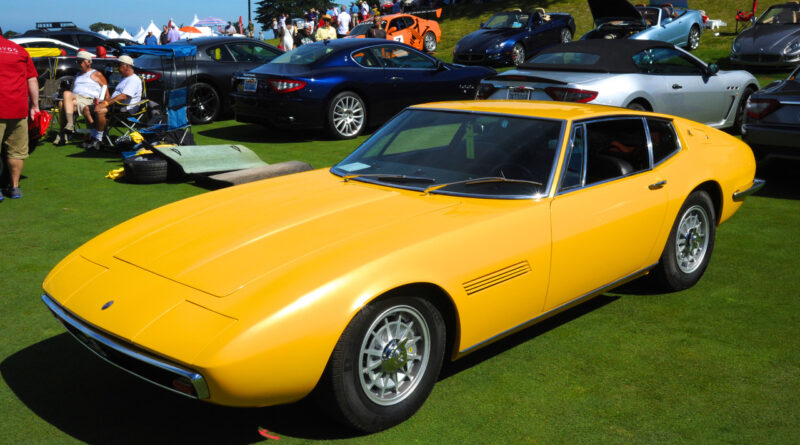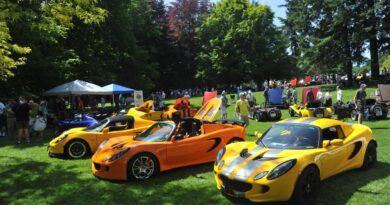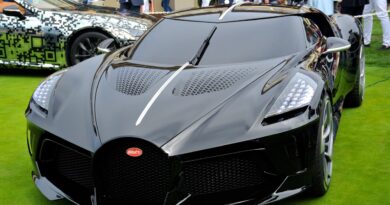I Have Been Baited; I Accept the Challenge
Beauty must embody balance, grace and tension, a yearning for something more. It must recall ugliness, torture, evil. To appreciate beauty, one must know the frightful, the grotesque; one cannot know good until one experiences evil. Yin and Yang; the complete picture must be known.
Societies have traditionally been judged by their painting, sculpture, architecture, music. Today, industrial design, the look of utilitarian things, seems to have taken over. More than ever (to our unending horror) fashion and branding shape what we see, buy, use. So, to the anthropology of societal judgement, we must add the automobile, along with any other modern devices you might dare. Perhaps the toaster, the washing machine, watches, or yachts? I’m going to stick to the ubiquitous automobile.
The car is today’s ultimate definition of kinetic sculpture. Beginning in the late 1920s, a broadening sense of the car as an object of beauty began to be recognized and pursued. During the great depression, of all times, cars came into their own as beautiful objects. Lalique created his incredible glass hood ornaments, or mascots; Paris coachbuilders like Saoutchik, Figoni & Falaschi, and Franay attempted to outdo each other in the era of art deco and the ‘teardrop’ car design. Autos began taking on regional, if not national, characteristics reflecting the societies where they were built.
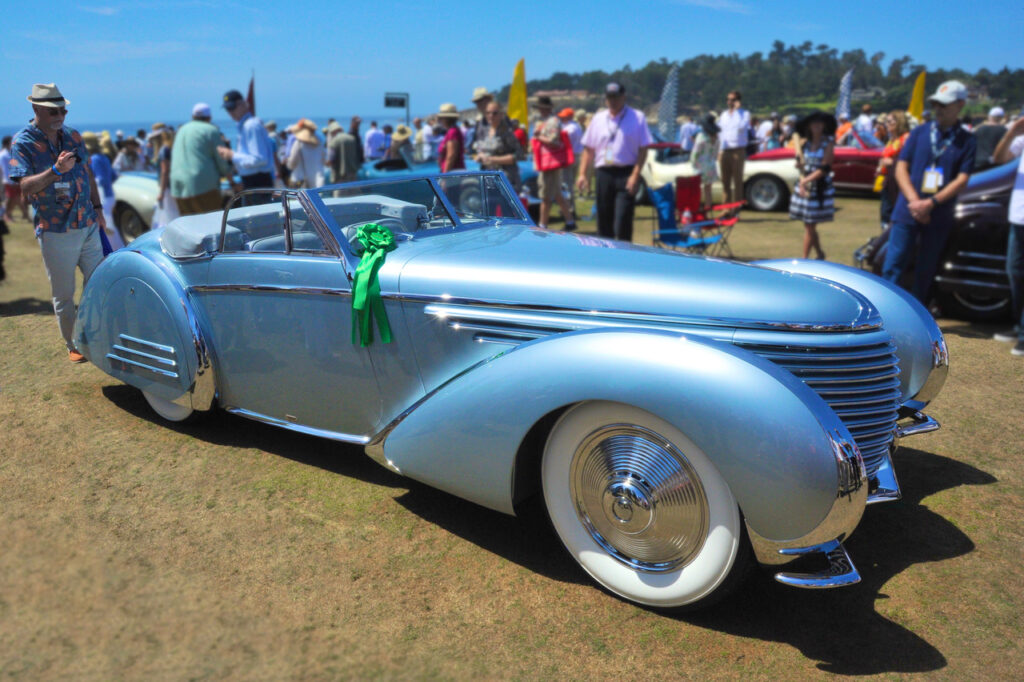
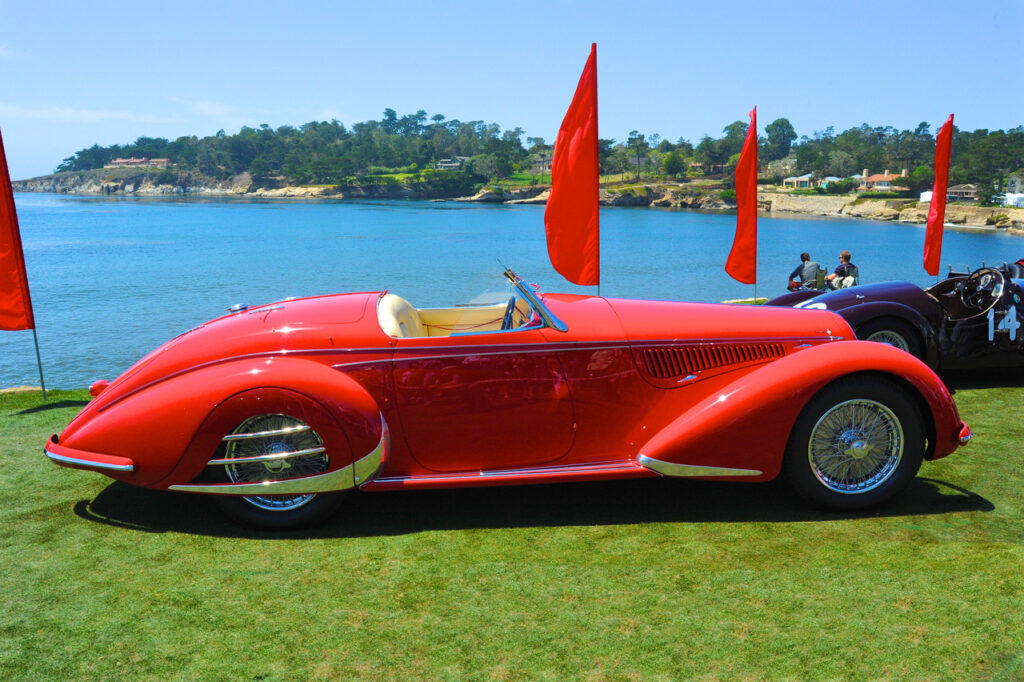
Right, the 1937 Delahaye 145 Franay. Left, the 1938 Alfa Romeo 8C2900B, both at Pebble Beach.
That’s anthropological evidence. Shouldn’t the auto, then, be considered an expression of a modern society’s pursuit, or execution of its perception of beauty? I think it should.
In an interesting article by the irrepressible Stephen Bayley in Octane Magazine issue 267, he posits that, for the sake of argument, artists largely abandoned the pursuit of beauty in 1960, leaving it “to others to make beauty their business.” Artists now are more interested in making a social or political statement that shocks than with creating anything of beauty. According to Bayley this “may be why contemporary art is so boring.”
He further notes “beauty is fugitive and elusive, making its home in different media at different times.” While he doesn’t believe any car yet made elevates to art, he does “think the finest cars are often beautiful and they have usurped the role of art in public life…. Problem is, beautiful cars are not made any more.”
To that last bit, I agree. To his mind, and coincidentally mine, the most beautiful cars were made in the 1950s and 1960s, into the early 1970s. I have an enthusiastic second to that, although a few of the cars from the mid-1930s are also quite stunning. The Delahaye 145 Franay Cabriolet and the Alfa Romeo 8C2900B above come immediately to mind.
From the 1960s, the work of Italian design houses Pininfarina, Bertone, Vignale, Ghia, Zagato and others created classic examples of elegant simplicity. Leonardo da Vinci once said, “Simplicity is the ultimate sophistication.” The elegant line, the blending of form and volume into a cohesive whole that looks good from any angle, that’s sculpture. But, while these cars are beautiful, they are not Michelangelos.
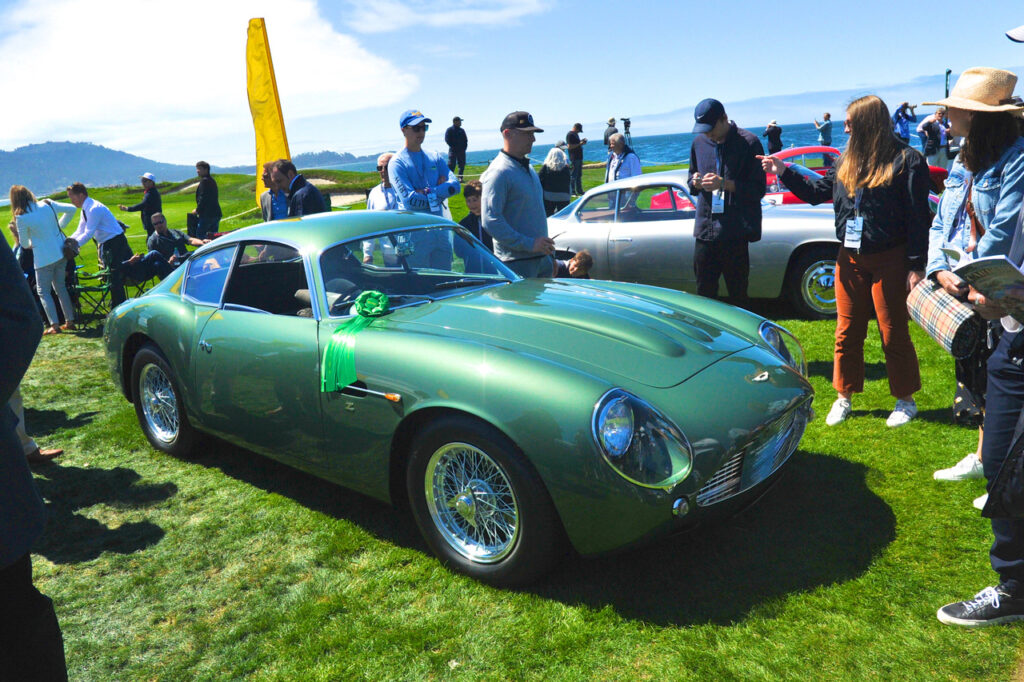
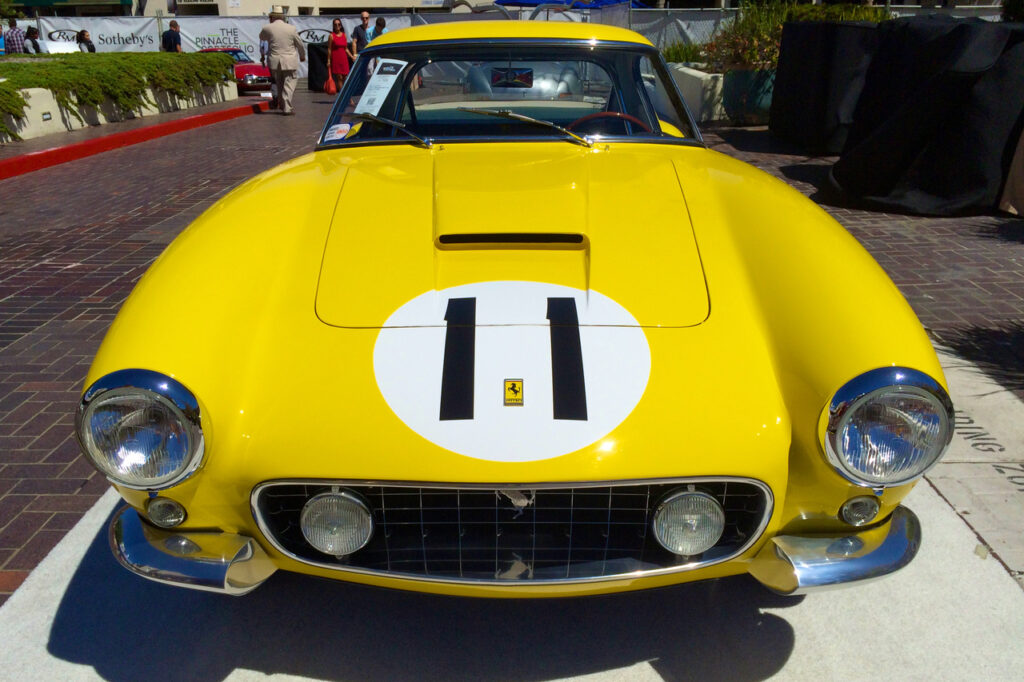
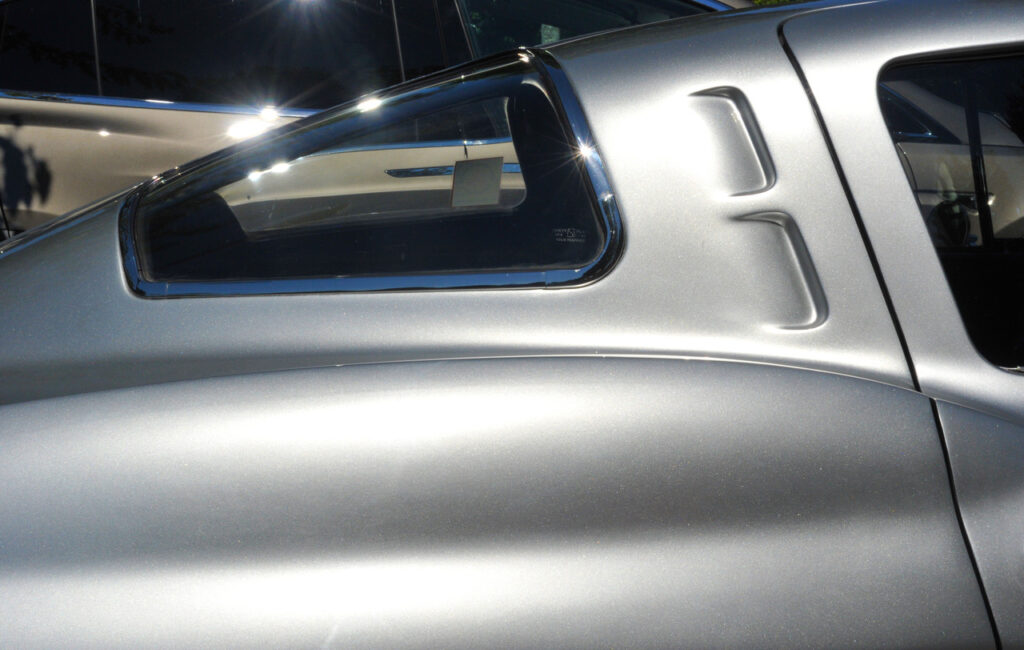
Left – 1962 Aston Martin DB4GT Zagato; Mid – 1960 Ferrari 250GT SWB; Right – 1963 Corvette Split Window
To that end, what will endure as examples of the art and beauty of our age? Will it be the golf club, or nothing more than a rotting banana taped to a wall? One must wonder. When compared, the automobile seems a rather pedestrian, if much more representative, form of beauty than a banana stolen from the local market. It is a rather sad commentary on the state of our appreciation, our recognition of beauty and art. Do they any longer go together?
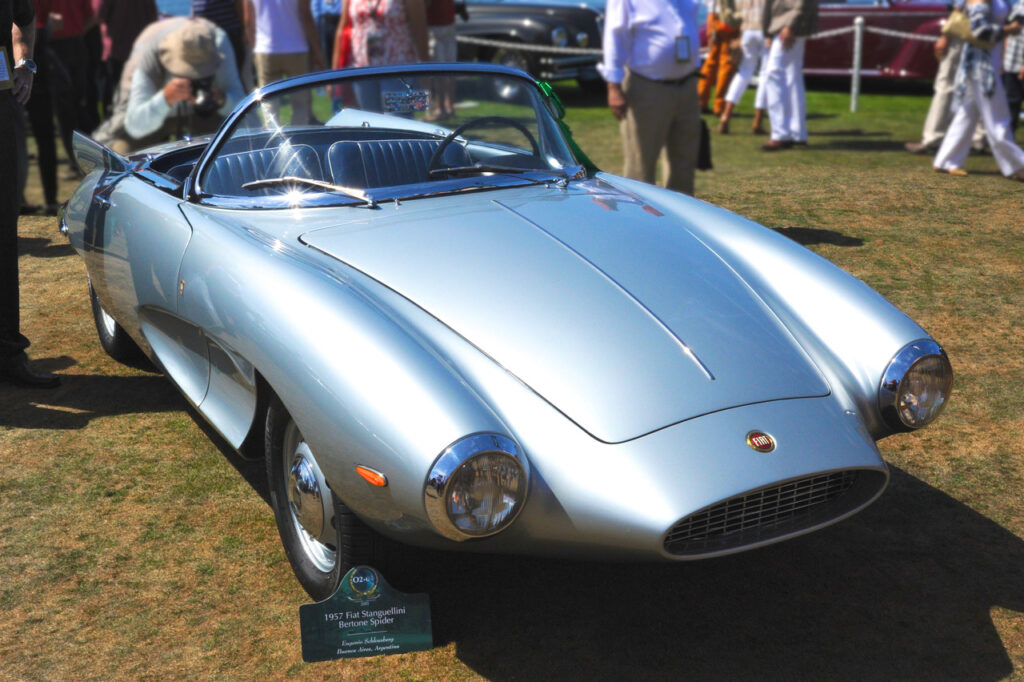
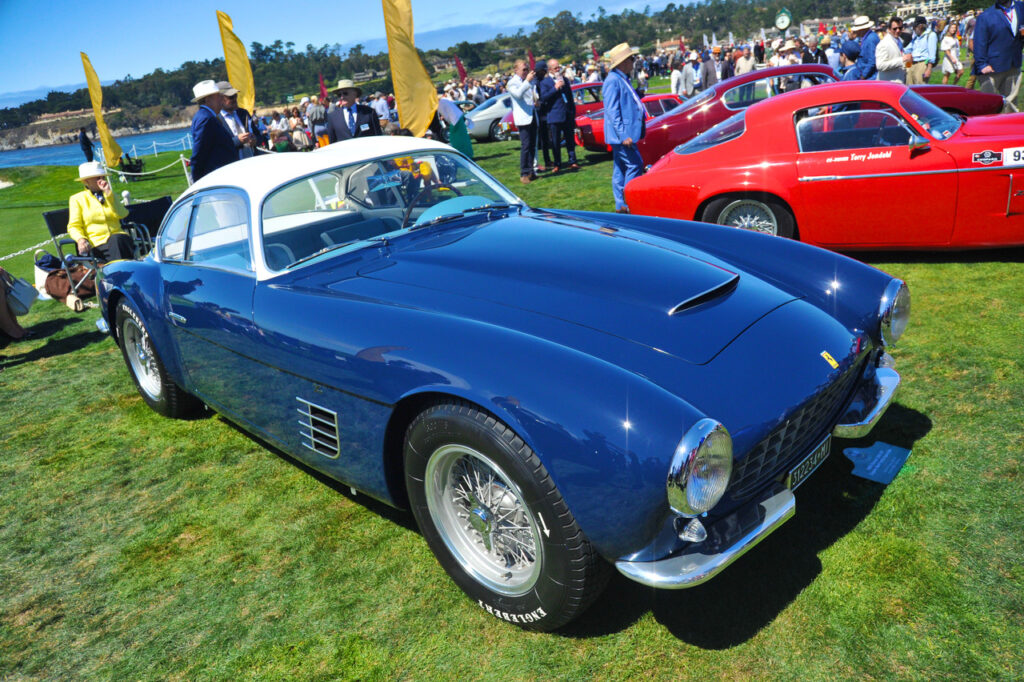
Left – 1957 Fiat Stanguelini Bertone Spider; Right – 1956 Ferrari 250GT Zagato Berlinetta Special.
I believe there are plenty of artists trying to create beautiful art. Photographers these days have so many tools to enhance, change, layer, infuse and alter what they initially capture through the lens. They can subtly or grossly portray nature in virtually any manner, turning what was once reality into fantasy. But, even the reality of what the camera captures has been called into question, so where does reality end and fantasy begin? Where in art does nature’s work become the work of the human hand?
I don’t see those questions being unequivocally answered any time soon.
Our things of beauty are no longer as organic as the past. Cars are made of metals and processed materials. We create plastic imitations of everything, even the occasional bit of leather or piece of wood. No longer are parts fabricated by hand; machines and computers do it all. Where is the tactile involvement in our creation?
In cars, only some auto manufacturers still use the life-size clay model in lieu of the computer model. In most other manufactured items, those industrially designed products, that no longer exists. A human hand no longer touches or directly creates the form. Will we eventually leave even that to the computer’s ‘intelligence’ to provide?
Michelangelo felt sculpture was the ultimate expression of art, for its three-dimensionality and painstaking labor. Leonard da Vinci, on the other hand, felt only painting could provide the control of color and light to express the subtleties of emotion, intellect, yearning. All we know is they both knew how to express beauty in their art. Will there be anything worthy of survival from our age alongside theirs?

